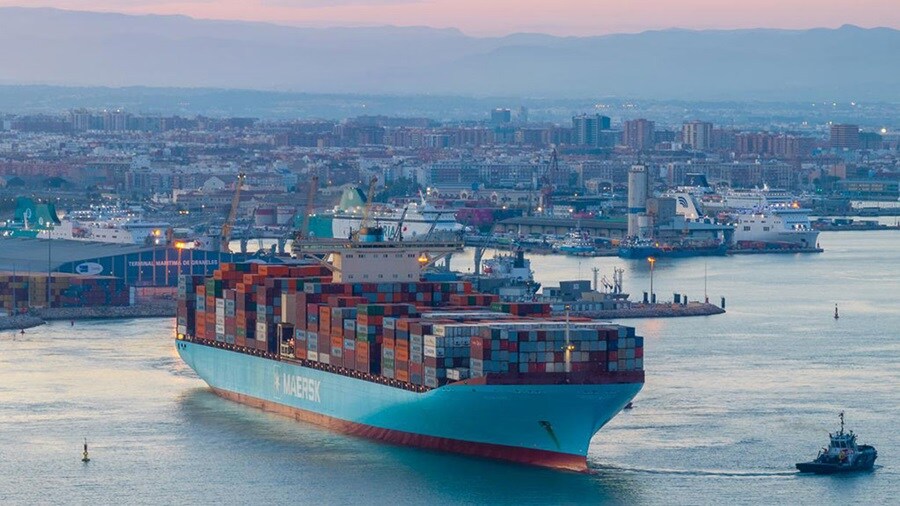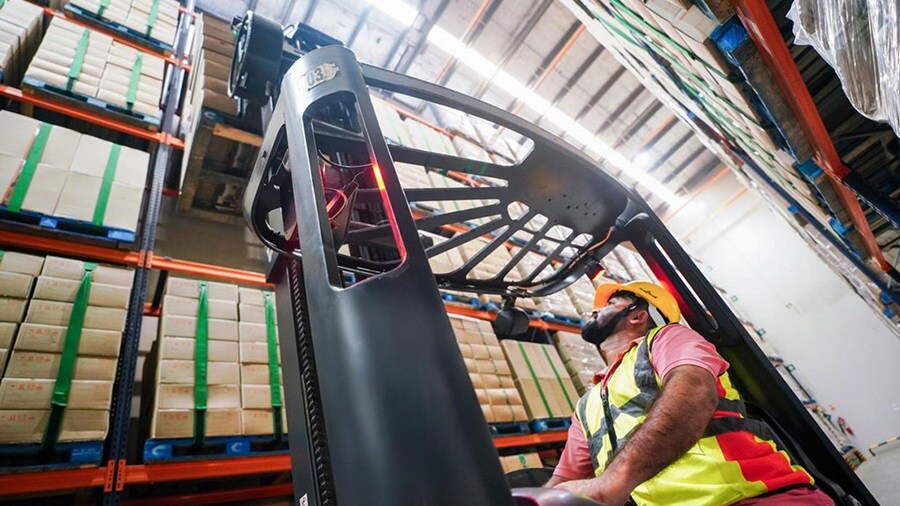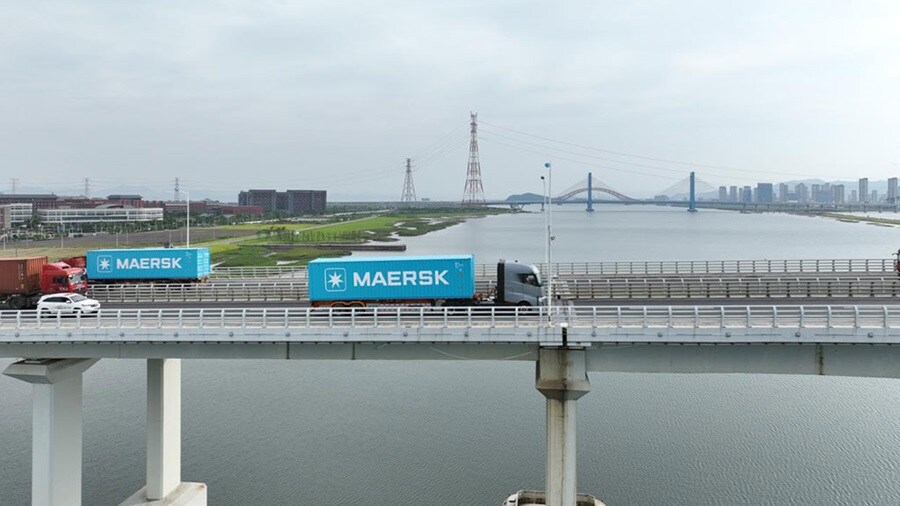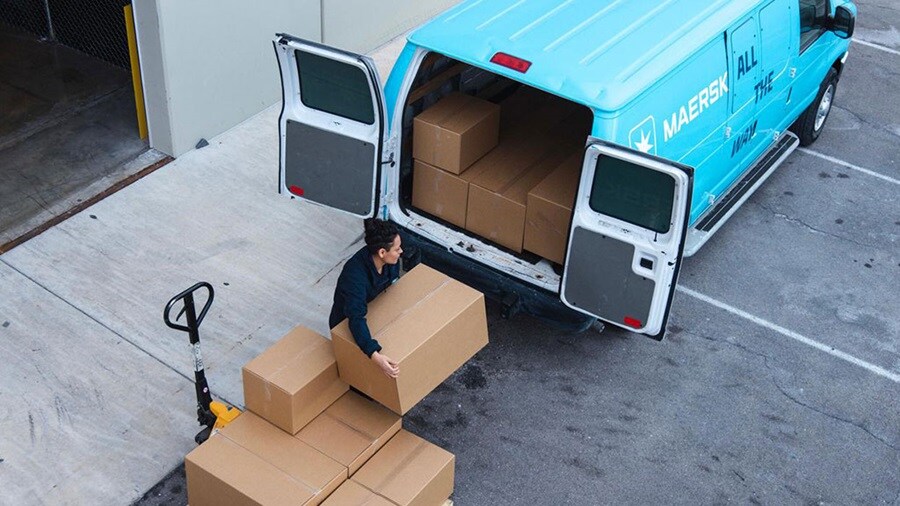As we head into peak season, supply chains remain in flux. We’re seeing earlier retail promotions and parcel bookings, variable lead times, and higher compliance needs from recent tariff changes. Capacity pockets are opening on some ocean lanes even as schedule changes loom. Many of you are leaning into flexible routing and LCL, bonded/FTZ strategies, strategic warehousing, and integrated visibility.
This month’s update shares suggested actions across lead logistics, ocean, LCL, customs, inland, warehousing, ground freight, and e-commerce to plan Q4.
To receive the Maersk North America Market Update in your inbox, sign up for our logistics newsletter here and update your preferences when prompted via email.
Lead Logistics Update

North American supply chains continue to face pressure from shifts in tariffs, port congestion, and global routing disruptions. These issues are contributing to longer lead times and variability in carrier performance. Some manufacturers advanced orders ahead of tariff announcements, while others adjusted sourcing or timing due to uncertainty.
At the same time, the role of lead logistics support is changing. Businesses are under pressure to improve planning accuracy and respond faster to disruption. According to KPMG, many are turning to generative AI and orchestration tools to make smarter decisions on procurement, routing, and fulfillment. However, tools alone aren’t enough, what matters is how well data, systems, and stakeholders are aligned.
If you’re navigating these challenges, focus on building end-to-end visibility across your supply chain. Consolidate transport and inventory data into a single view to spot delays early and adjust quickly. Predictive alerts and exception management tools can help your teams act on disruptions before they impact customers or cost. We also recommend validating alternative routing options, especially if you’re exposed to West Coast congestion or single-lane dependencies.
Now is also the time to pressure-test your supply chain scenario planning. If tariffs shift again or capacity tightens late in the year, can you reroute quickly? Can your upstream suppliers and downstream warehouses pivot together? These are the kinds of questions we’re hearing from logistics leaders who are preparing not just for peak season, but for persistent disruption.
For support assessing your lead logistics strategy or identifying risk points in your current network, our team is available to help.
Ocean Update

Europe to North America: This year’s summer slowdown and changes in U.S.-bound cargo flows are impacting our Transatlantic and Mediterranean import services to the U.S. At the same time, low water levels are reducing our capacity into Canada. Please plan accordingly and contact your Maersk representative for alternative routing options.
Indian Subcontinent, Middle East, and Africa to North America: Recent U.S. tariff developments related to India have introduced uncertainty into the market and circumstances may change very quickly if tariffs are adjusted.. Currently, space remains available on our MECL service, with weekly sailings scheduled through September. If you're experiencing disruptions from blank sailings, we have capacity that can support shifting volumes. Reach out to your Maersk representative to secure space or adjust your planning.
Asia-Pacific to North America: The Transpacific market remains uncertain as we head into the end of the year. We recognize your continued support in meeting allocation commitments across our network.
Looking ahead, the Chinese Golden Week from October 1 to 8 can impact production schedules and labor availability, potentially leading to timetable adjustments and equipment repositioning needs. Please keep a close eye on carrier schedules and cutoffs across your portfolio. We’ll share our schedule updates as they are finalized, and we’ll utilize our network’s flexibility to minimize the impact on your business.
The U.S. is considering new product-specific tariffs, including on furniture, which may affect some shipments. USTR fees are also set to begin phasing in from mid-October. While some carriers may adjust services in response, we don’t expect these changes to impact your Maersk shipments.
Our East-West (Gemini) network continues to deliver strong schedule reliability, with 100% into the U.S. West Coast and 93.1% into the East Coast, both well above industry averages. If you're planning for Q4 or managing shifting demand, we’re here to support your supply chain needs.
Latin America to North America: Peru’s fruit season is gaining momentum, and we’re adjusting our network to help you reach markets faster. Our CLX service is returning to Paita with a 13-day transit to Philadelphia, arriving Mondays via our NAE service. This timing supports early-week market availability. The first call is scheduled for September 9. We’ll also continue to offer our Peru feeder as an additional option from Paita and other Peruvian ports.
In the Caribbean, service changes will take effect at the end of September. The new Caribbean–North Europe (CAX) service will replace the current CRX and COEX services. CAX will no longer call Veracruz and Altamira, which will transition to the UCLA service. These ports will remain connected through Cartagena, with access to transshipment options across the Intra-Americas network.
We’re coordinating closely across our Sales, CX, and Network teams to support a smooth transition. Please review your routing plans and contact your Maersk representative if you require support.
To receive the latest updates on your cargo, sign up for ETA notifications or check schedules on Maersk.com. For operational updates in our “Weekly Reader,” subscribe to our advisories at Maersk.com/newsletter.
Less than Container Load (LCL) Update

As tariff-related uncertainty levels off, many importers are reassessing how to manage supply chain flows more strategically. Two trends are shaping current demand: some businesses pulled forward inventory earlier in the year and are now managing reduced volumes, while others are trialing new vendors in lower-tariff regions, often starting with smaller, test shipments.
In both cases, LCL offers practical advantages. It supports smaller, more frequent shipments without requiring a full container, helping you maintain a steady supply without overcommitting to volume. For teams with clear visibility into inventory needs, LCL provides a way to schedule regular shipments and avoid the higher costs of air freight.
If you're adjusting your procurement strategy or diversifying your sourcing network, consider how LCL can provide added flexibility and cost control. Our integrated network offers consistent weekly departures and end-to-end visibility, helping you maintain control even in less traditional supply chain setups. Reach out to your Maersk contact to explore how LCL can support your planning.
Customs Update

Recent regulatory changes across the U.S., Canada, and Mexico are reshaping the customs environment for importers. New tariff measures, trade program adjustments, and documentation requirements are increasing complexity and cost across multiple lanes. Understanding these developments is key to maintaining compliance and managing landed cost exposure.
In the U.S., effective August 29, U.S. Customs and Border Protection eliminated the de minimis exemption, which previously allowed duty-free clearance for shipments valued at $800 or less. All shipments now require formal customs entry and duty assessment, which significantly impacts small parcel and e-commerce operations. This change increases the need for customs brokerage, bond coverage, and accurate product classification, even for low-value shipments.
Tariff treatment for EU-origin goods has also changed under the July 31 “Reciprocal” Tariff Executive Order. Goods previously subject to lower duty rates are now adjusted to a 15% tariff. While shipments loaded prior to the effective date and entered by October 5 may qualify for in-transit relief, importers should assess how this change affects landed costs and delivery timelines in their EU-facing operations.
The U.S. has also introduced new duties on a broader range of India-origin products, increasing costs under expanded Chapter 99 coverage. In parallel, steel and aluminum tariffs under Section 232 now apply to derivative items like pipe fittings, fasteners, and semifinished alloys. These changes bring more products under duty liability, highlighting the need for proactive tariff classification and sourcing reviews.
Steel and aluminum imports are also now subject to stricter origin reporting rules. Importers must declare the country of smelt and pour (or cast), and goods tied to non-market economies such as China, Russia, and Belarus may face tariffs as high as 50%. Accurate mill certification is essential, and failure to comply could result in penalties or shipment holds.
On Friday, August 29, a federal appeals court ruled that many tariffs imposed under the International Emergency Economic Powers Act (IEEPA) exceeded presidential authority. Enforcement of these tariffs remains in place until mid-October, pending a potential Supreme Court appeal. Several measures could be affected if the ruling stands, though other tariffs (Section 301, 232) are based on different statutes and are not directly addressed by this decision.
Section 301 exclusions for certain China-origin goods have been extended through November 29, 2025. Products covered by these exclusions will retain their current treatment until that date. Importers should reassess their exposure, update landed-cost models, and plan for potential duty changes.
In Mexico, the government has announced a temporary ban on importing finished footwear under the IMMEX program. The ban follows a 159% increase in footwear imports between 2019 and 2024, much of it undervalued or misdeclared. A 25% minimum tariff will now apply to eligible imports, and authorities are tightening enforcement. If your supply chain includes the import of finished footwear into Mexico, you’ll need to plan for new cost structures and documentation requirements.
In Canada, Prime Minister Mark Carney announced that tariffs on U.S.-origin goods under CUSMA will be lifted effective September 1, 2025. This may reduce landed costs on a broad range of imports. However, 25% tariffs will remain in place for steel, aluminum, and automotive products. While full CBSA guidance is still pending, we are monitoring updates and will adjust clearance procedures as needed. If your business imports into Canada, now is a good time to review your sourcing strategies and assess potential opportunities arising from tariff relief.
Taken together, these developments signal a sustained move toward greater enforcement, higher duty exposure, and more complex documentation requirements across North America. Tariff volatility is likely to persist, particularly in sectors such as steel, aluminum, and goods of Chinese origin. We regularly update our Global Tariffs page with the latest developments and post advisories for real-time impacts. Subscribe at maersk.com/newsletter for the latest updates.
Our Maersk Customs Services teams are here to help you navigate this environment. From tariff modeling and documentation reviews to exclusion tracking and customs integration, we support your compliance and planning efforts. For assistance in the U.S., contact CHB.NORTHAMERICA@MAERSK.COM. For support in Canada, reach out to compliance.ca.mcsi.nam@maersk.com.
Inland Update

In the U.S., ports and inland rail yards are performing well. Chassis supply and driver capacity are healthy, allowing you to clear boxes quickly if you plan pickups and returns efficiently and most markets offer immediate carrier access.
Drayage costs and capacity are shifting: national dray rates are up 4.6% year over year, while fuel, labor, and chassis costs are rising. With a recent downward shift in cargo flows and compressed margins, there may be an increased risk of last-minute cancellations; build redundancy on key lanes and secure capacity early. If you are working with us, our multi-carrier network, including in-house trucking, helps maintain access when local capacity tightens.
Labor and fuel trends add pressure. The recent suspension of certain work visas for commercial drivers may also tighten availability. Diesel averages $3.78/gal (up $0.08 YoY), adding pressure to total move cost.
In Canada, the inland market remains active. West Coast volumes are sustained, while the East continues to feel strain around Montreal. Elevated terminal dwell, major road construction at Turcot, Ville Marie, and the La Fontaine Tunnel, and low water on the St. Lawrence are driving draft limits and uneven vessel discharge volumes. Upstream, high dwell at Newark, especially during citrus season, is slowing Canada-bound rail cargo, and reefer trucking from the U.S. East Coast remains tight.
Plan Canada moves with added lead time and keep Montreal delivery windows flexible to account for variable discharge and roadworks. Share reefer, overweight, and urgent shipment details early so carriers can assign the right equipment and drivers; line up gensets and plug in options for reefers staged near the port. Where service options allow, validate alternate routings—different inland ramps or East Coast gateways, to reduce exposure to a single node. If Newark origin rail is delayed, consider short haul dray plus transload to truck for time sensitive northbound cargo. Pre book reefer trucking earlier than usual and stage safety stock closer to demand to buffer late inbound moves.
Warehousing Update

In North America, inventory positioning remains largely aligned to demand. Some manufacturers advanced orders around tariff announcements, while most retailers kept inventories stable. Warehousing conditions reflect timing shifts rather than broad stock build-ups: smaller facilities remain tight, larger sites are more flexible, and bonded/FTZ nodes are in higher demand for duty agility.
Warehousing is no longer just about securing space, it’s a core part of how businesses build flexibility into their supply chains. Strategic warehousing decisions now reflect not only where goods are stored, but also how quickly they can be moved, how well they can adapt to sourcing shifts, and how they can be optimized for cost control, duty deferral, and customer service.
We’re expanding our warehousing and distribution capacity across North America, including dedicated buildings for customers, as well as continued investment in automation and integrated warehouse management systems. We’re also scaling bonded and FTZ-enabled solutions to help customers manage landed cost exposure and defer duties when needed. These solutions are particularly relevant in response to recent U.S. customs policy changes, including documentation requirements and tariff expansions affecting steel, aluminum, and goods of Chinese origin.
For customers rethinking their distribution strategy, a flexible mix of transload and variable warehousing space can help absorb demand shifts. We recommend evaluating your inventory positioning and considering diversification across port entries and inland routing options. Many of our customers are also exploring regionalized distribution models, using tri-coastal networks anchored on the East Coast for retail replenishment, the Midwest for inventory centralization, and the West Coast for import balancing. This approach can reduce lead times, lower last-mile costs, and improve speed-to-market.
As outlined in our recent article, “Building Resilient Supply Chains,” warehousing in 2025 is increasingly integrated into broader logistics strategy. Brands are moving from static networks to ones that can anticipate disruption, rebalance inventory proactively, and support high-velocity fulfillment scenarios. It’s not just about storage, it’s about readiness. Whether you're preparing for policy shifts, e-commerce peaks, or sourcing changes, your warehousing strategy needs to flex with your business.
Through the remainder of 2025, we expect overall warehouse demand to remain below 2024 levels, but the pressure for agility, visibility, and cost optimization will continue to grow. If you’re reviewing your network design, we can help you identify warehousing options that align with your supply chain goals, whether that’s deferring duties, decentralizing fulfillment, or preparing for future volatility.
Ground Freight Update

Ground freight demand is building ahead of peak in the U.S. E-commerce shippers are locking last mile volume early to get in front of capacity constraints and peak surcharges. Some major retailers have moved up promotions, which will pull volume forward. Given the uncertainty around holiday demand, plan for short booking windows and uneven flows rather than a broad surge.
If you’re moving with us, we’re preparing nationwide with more than 1,000 trucks and 4,500 trailers. Our flexible less-than-truckload (LTL) and full truckload (FTL) solutions allow for time definitive options where needed.
For a deeper dive into U.S. ground freight demand, capacity, and rate trends that may influence your planning, see our latest U.S. Ground Freight Market Outlook.
Ground freight in Canada is stable with early signs of recovery. Activity is normalizing after earlier tariff and industrial slowdowns, supported by steady retail and wholesale demand and a slow rebound in construction and manufacturing.
Use this window to plan with more confidence, especially for palletized or non-urgent moves. Secure short- to mid-term capacity now, with extra focus on Western Canada and infrastructure-driven routes where demand can spike. Keep lead times clear and use fixed departure schedules to reduce the impact of temporary capacity shifts. If you run cross-border flows, align bookings with your production and delivery calendars to maintain schedule integrity.
We are prioritizing service reliability and dependable capacity across key domestic and cross-border lanes by reinforcing relationships with core carriers and aligning our network to predictable demand flows. This helps keep your operations steady even when regional imbalances emerge.
If you need lane-specific planning support or want to firm up capacity, reach out to your local Maersk representative.
E-Commerce Update

E-commerce delivery networks are under pressure as market conditions shift and peak season approaches. Many shippers are adjusting their strategies to improve reliability, manage cost, and protect customer experience.
Delivery performance depends on more than just capacity. It requires coordination across fulfillment, sortation, and last-mile operations. In the last two months, we’ve expanded our parcel delivery network by adding three new regional and national carriers. This gives you more routing options and can help stabilize service as volumes increase.
Our parcel operations are focused on preparedness. This includes capacity planning with carriers, route optimization using real-time data, and contingency planning to keep shipments moving if disruptions occur. If you're managing e-commerce fulfillment, especially with tight delivery windows, having a backup plan is essential.
Peak season will test supply chains. Now is the time to review your delivery network, confirm capacity, and identify risk points. If you need support assessing readiness or adjusting routing strategies, our team is available to help.
More News & Insights from Maersk from around the world
- Maersk launches a shared service centre in Poland, supporting customers across Europe
- Maersk Opens Panama Pacifico Logistics Centre as a Gateway to Latin America
- Maersk launches “Maersk Trade & Tariff Studio” helping global supply chains navigate tariff volatility and complexity
Visit our Insights Hub where we share the latest trends in supply chain digitization, sustainability, growth, resilience, and integrated logistics.
Useful links
To sign up for the Maersk North America Market Update newsletter, click here and update your preferences when prompted via email.
Check Maersk market updates from across other regions by clicking here.
Anything you need, we’re here to help
I agree to receive logistics related news and marketing updates by email, phone, messaging services (e.g. WhatsApp) and other digital platforms, including but not limited to social media (e.g., LinkedIn) from A. P. Moller-Maersk and its affiliated companies (see latest company overview). I understand that I can opt out of such Maersk communications at any time by clicking the unsubscribe link. To see how we use your personal data, please read our Privacy Notification.
By completing this form, you confirm that you agree to the use of your personal data by Maersk as described in our Privacy Notification.

